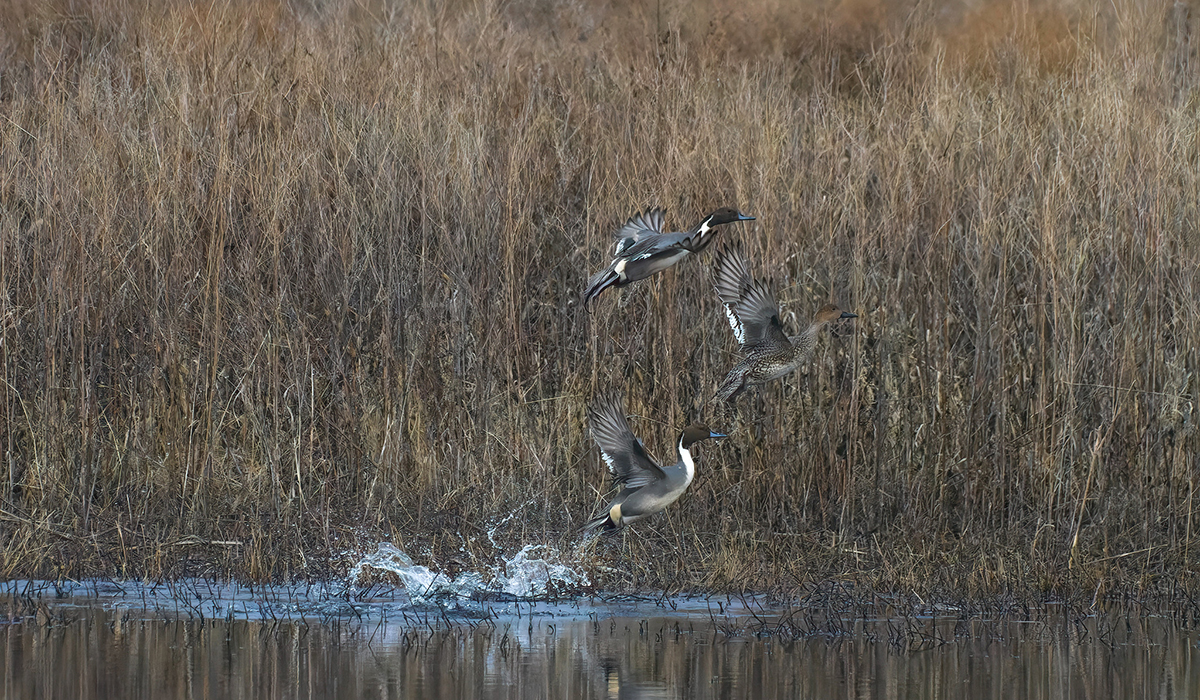Michigan Investing $13 Million in Strategic Wetland Restoration
State funding will protect Great Lakes coastal habitat and inland wetlands
State funding will protect Great Lakes coastal habitat and inland wetlands

Michigan is making a major investment in the future of Great Lakes water quality and wildlife habitat, allocating $2.55 million for wetland restoration after Gov. Gretchen Whitmer approved the state’s annual budget Thursday. This follows a supplemental appropriations bill signed by Whitmer in March 2023 that secured $10 million for state wetland restoration. The investment is critical to the creation of healthy wetlands, which play a vital role in filtering nutrients before returning water to Michigan’s lakes, rivers, and streams.
“Michigan is making a serious commitment to strategic wetland restoration that will benefit Great Lakes water quality and the wildlife and people that depend on that habitat to survive,” said Ducks Unlimited Director of Policy, Kyle Rorah. “Two million dollars of the funding has been labeled as ‘ongoing,’ which means that money will be earmarked strictly for wetland protection every year. We are just getting the ball rolling in Michigan, and there will only be more and more habitat development in the years ahead.”
The remaining $550,000 is budgeted for urban wetlands, which make cities more livable. With so many paved surfaces in metropolitan areas—and fewer places for water to disperse during storms—urban wetlands are important to flood mitigation (a single acre can store 1.5 million gallons of floodwater). Wetlands filter stormwater before it returns to waterways, absorb heat, improve air quality and provide greenspaces for people and wildlife.
"Clean water is not just essential for drinking, but also for the health and stability of our communities, our wildlife and our economy,” said state Sen. John Cherry. "I am proud to have championed this effort to promote natural habitat and cleaner water systems throughout the state."
According to Michigan’s Department of Environment, Great Lakes and Energy, the state has just over 275,000 acres of wetland acres remaining. Michigan has lost 50% of its historic wetlands and, in some locations—Saginaw Bay and Lake Erie watersheds—that loss is as high as 90%. Michigan’s Department of Natural Resources will play an important role in administering the funding and serving as DU’s primary partner in actively restoring state wetlands.
“Protecting and restoring Michigan’s wetlands – everything from coastal wetlands and marshes to fens and bogs – is critical to safeguarding many of the things that define Michigan’s way of life: fresh water, abundant fish and wildlife, and water-based outdoor recreation,” said Acting DNR Director Shannon Lott. “This is a tremendous opportunity to address water quality, wildlife habitat and climate change variability on the landscape in ways that will yield real-world benefits for residents now and well into the future.”
DU and its partners have long advocated for the state of Michigan to provide increased funding to restore wetlands near Saginaw Bay and throughout the Lake Erie Basin as they are vital habitat for breeding and migratory waterfowl and other bird species. Without enough healthy wetlands in place to filter nutrients from run-off, harmful algal blooms (HABs) have become an annual occurrence in both watersheds since the late 1990s.
HABs – toxic colonies of algae that grow out of control – can compromise the quality of drinking water in local communities, are detrimental to a variety of wildlife species and in extreme cases cause human illness or death.
To address these environmental issues, DU has partnered with state agencies on a landscape assessment tool that identifies and evaluates sites for wetland restoration so that agricultural run-off can be intercepted before making it to Saginaw Bay and Erie. This added funding will only help to preserve Michigan wetlands.
“The Great Lakes state is known for our abundance of freshwater,” said DU Regional Biologist, Kali Rush. “It is our responsibility to keep water clean and the landscape healthy. DU and our long-standing partners are working diligently to include wetland restoration as a crucial tool in combatting HABs while providing breeding waterfowl and other wildlife habitat.”